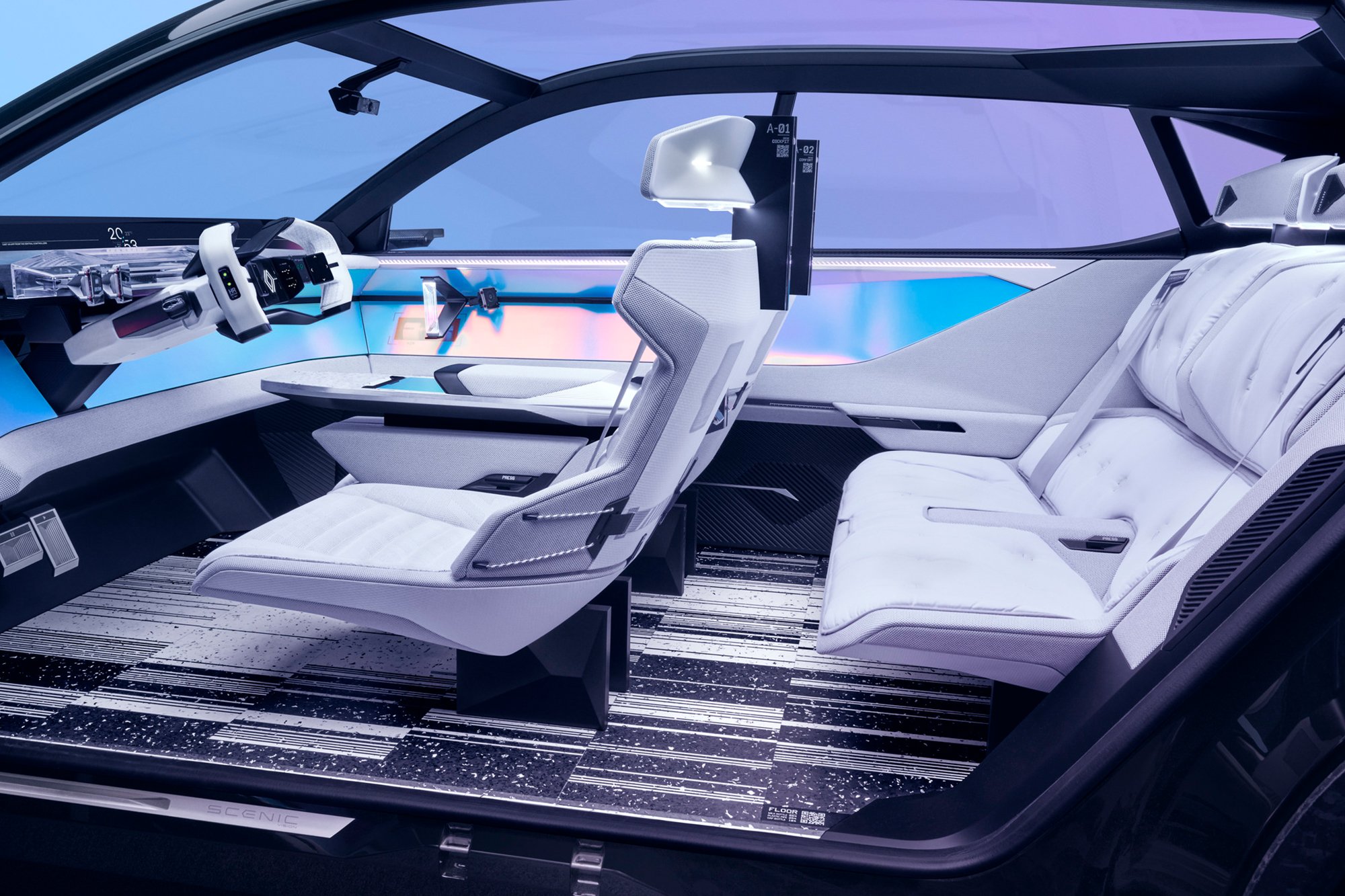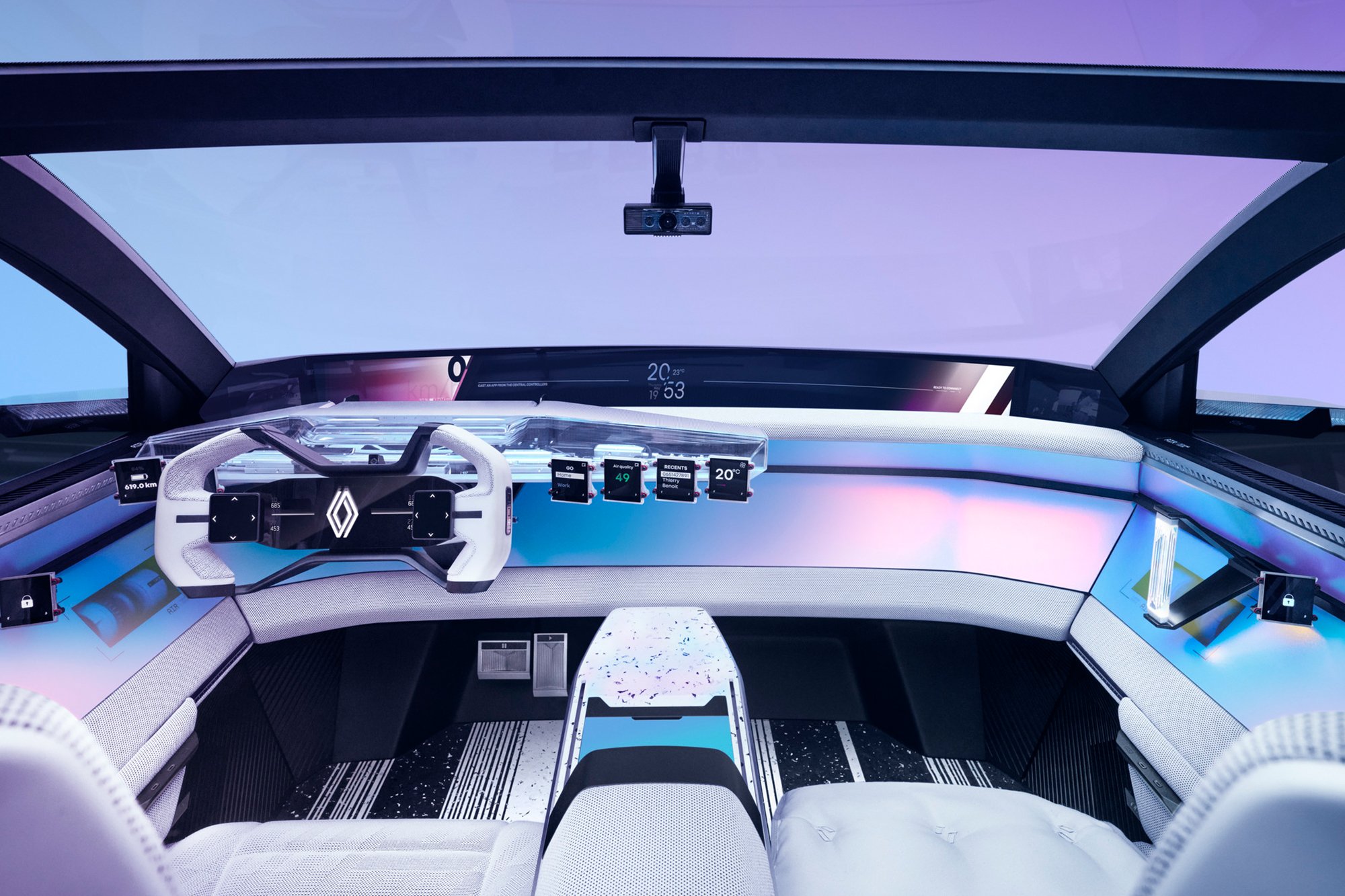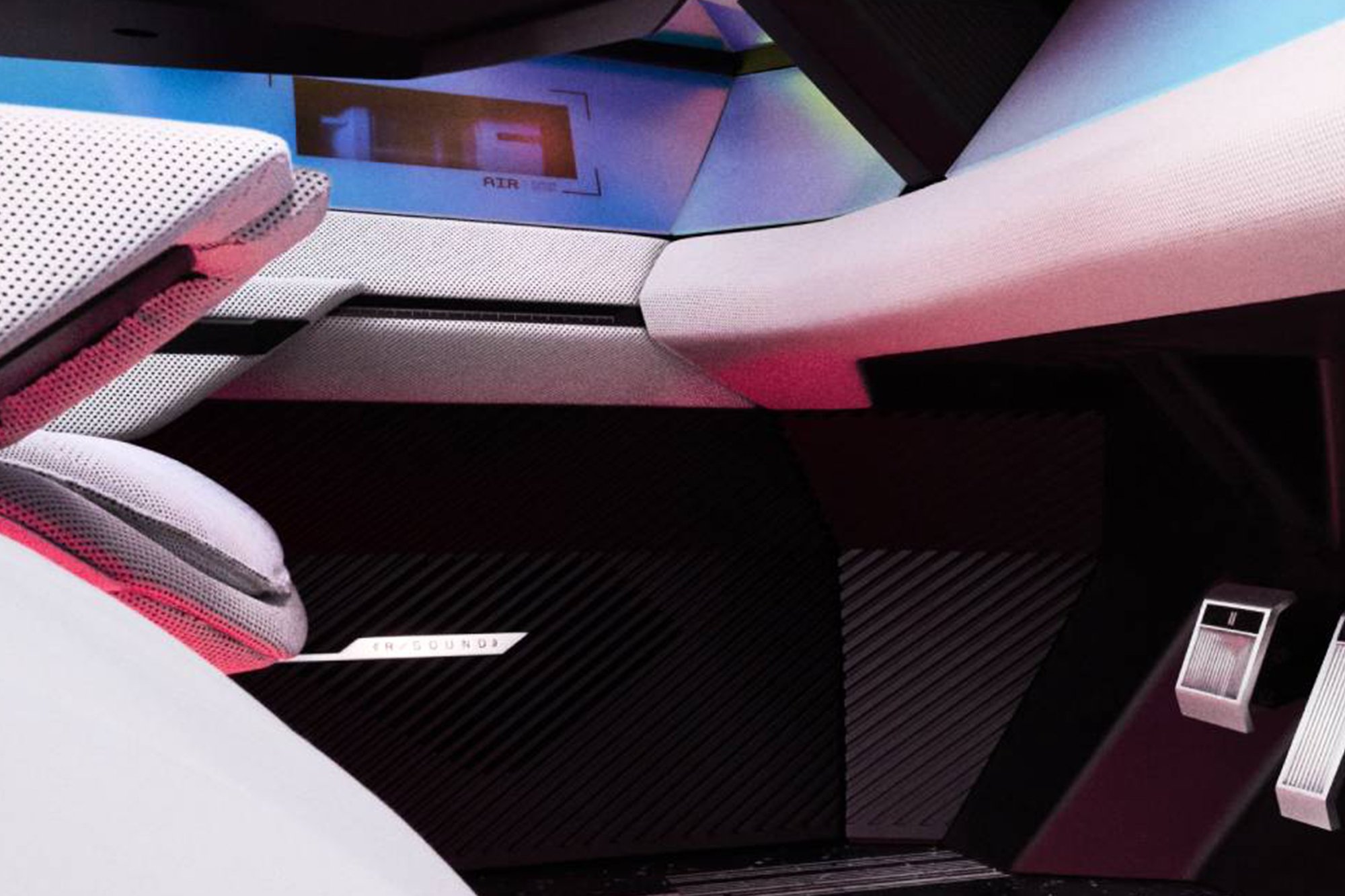Be introduced: Eléonore Lebec – Colour & Trim Designer at Renault Group
‘Be introduced’ to our new interview series with inspiring designers from the mobility industry – from the field of CMF and C&T Design, Exterior Design, UX/UI Design, Sound Design and many more. In short, crisp interviews, we learn more about the person's career path and the entry into the professional world, then secondly about the respective profession currently working in, and last but not least we get an insight into how the person sees mobility and their field in the future.
So be introduced to Eléonore Lebec. Currently she is Colour & Trim Designer at Renault Group. One of her latest project was the Renault Scenic Vision. The design of the concept car is centred around accessibility, creating a unique experience for passengers while uniting safety and well-being.
Learn more about the career path of Eléonore, her studies and entry into the automotive industry, the facing challenges in terms of CMF Design in the project Renault Scenic Vision and her opinion on how CMF Design will look like in 2030.
What did you do for graduation / post graduation and what was your entry into the industry?
Before my graduation as a car designer in 2020, I did a bachelor degree in product design, thinking I would specialise in car design later. That’s what I did. When I started to study car design at Strate School of Design (France), all my class mates had been wishing to become an exterior car designer. It has been part of our childhood dreams. During my studies, I was more destined to be an interior designer. In my senior year, I went to the see the class director and asked him: “I think I want to switch to colour & trim. Do you think I should work on my diploma in that specific direction?“ He told me that it would be a shame to give up on volume design skills and to only focus on colour and trim. I have listened to his advice and worked on a project that combined product and interior car design. I was very proud of my graduation project. Even though it was a very challenging project, because it was at the beginning of the 2020 Covid crises. It was a though time, but I'm very glad I went through with it, followed by my thesis subject about minimalism, a very enriching topic to work on.
After graduation I applied at Renault for two internships – interior design and colour and trim design. I was accepted for the colour & trim internship. With this great opportunity, I really understood that I truly wanted to work as a colour and trim designer. I felt I could bring something in the team and that I found my place in the design industry.
I am very glad that was I was able to figure so quickly which job direction makes me happy. Today, I also know that the design, colours and materials space is so broad and full of possibilities, that I might not stay in the automotive industry my entire career. And that’s the beauty of it.
You have been in charge of the Renault Scenic Vision. What have been the challenges in terms of CMF Design?
The Scenic Vision was my first project at Renault, so my first project after my internship and graduation in the business world, my entry into the world of work. There have been several challenges for me within this project. The first one – to make a marks and proof my values. Of course, I didn’t want disappoint the people that hired and trusted in me. So personally, it was quite challenging to have these two pressures on me. The second one – time. When speaking of a concept car, time is very short in these type of projects. You have to make very quick and decisive decisions. And with these quick decisions come constraints in delivery and production. Ultimately, it is a concentrate sample of a production project, made in 9 months instead of 4 years.



How do you think will CMF Design look like in 2030?
In the creative industry, things can go really fast and new technics and technologies are visible every day. That gives us so many incredible tools to explore creativity in various ways. But I am also very faithful and sensitive to „old-fashioned creativity“ – in all there is beauty. When I say this I’m thinking of working with paper, paint, printed magazines, etc. in order not to loose this magic and this emotion.
I hope in 2030, through colour and trim research, we still keep this emotion and make it even stronger – more human, more memorable, using a mix of incredible tech and very minimal, ancestral tools.
Pictures: Renault Group


